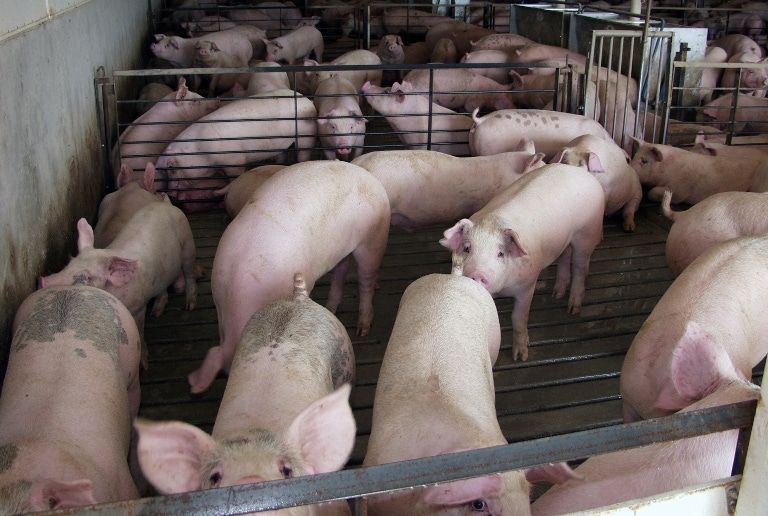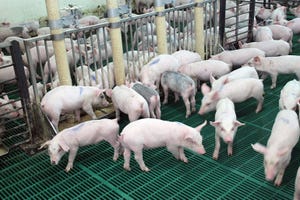A breeding herd that is only 0.6% larger than a year ago, stable sow numbers, and a market herd reportedly 2% larger than it has been, are all factors contributing to the cautious approach to pork industry expansion.
April 11, 2012

Pork producers are holding back when it comes to industry expansion, says Chris Hurt, Purdue University Extension economist. He says a breeding herd that is only 0.6% larger than a year ago, stable sow numbers, and a market herd reportedly 2% larger than it has been, are all factors contributing to the cautious approach to expansion.
Large financial losses in 2008 and 2009 and uncertainty associated with higher feed prices due to crop damage in South America are also reasons for the reduced profit outlook for 2012.
“The current outlook is for profits of just $4 per head for 2012,” Hurt says. “This compares with estimated profits of $14 per head last year. An early look toward 2013 suggests modest continued expansion of pork production with somewhat lower hog prices. Feed costs are expected to moderate to the down side with estimated total costs dropping to around $60 per live hundredweight compared with $63 in 2012.
“One thing is sure,” Hurt says. “The U.S. pork industry’s costs structure has changed significantly from around $40 during the $2.00-a-bushel corn era to closer to $60 per live hundredweight now.”
Hurt says that cash hog prices and lean hog futures were negatively impacted by the media attention and consumer reactions surrounding lean finely textured beef.
“With that issue receiving less attention, hog prices should be set for a spring rally in the next six weeks,” he said. “Over the past five years, for example, live hog prices have rallied an average of $11 per hundredweight into mid-May. A similar increase this year is expected and should take prices that are currently in the low $60s to the low $70s over coming weeks.”
According to Hurt, prices are expected to average in the higher $60s for both the second and third quarters this year and then drop seasonally to near $60 in the last quarter of 2012 and first quarter of 2013. Prices for the spring and summer of 2013 are currently expected to be in the mid-$60s.
“Pork supplies in 2012 are expected to rise by about 2%, but demand is expected to absorb these modest increases,” Hurt says. “Exports will remain an important component of that demand as USDA analysts expect export shipments to remain at record high levels. Domestic demand should remain strong due to population increases near 1% and to some consumers selecting pork as an alternative to high-priced beef.
“Beef availability will drop to just 55 lb. per person this year compared with 65 lb. five years ago. Consumer beef prices are expected to rise nearly 7% this year from last year to $5.15 per pound as an average across cuts. Pork prices, on the other hand, will rise modestly and be priced about $3.45 per pound and draw some attention away from beef purchases,” Hurt says.
Hurt explains that the greater increase in market hogs versus the breeding herd is the result of continued increases in the number of pigs per litter. Producers also indicate they will modestly reduce the number of sows farrowing in coming months. Farrowing intentions are down about 1% for the spring quarter and down 2% for the summer quarter. If intentions materialize, pork supplies will only increase by about 1% in the fall of 2012 and early 2013.
May 2012 corn futures have increased by about $0.60 cents per bushel, and May soybean meal futures have increased by nearly $100 per ton.“Together these have increased feed costs by about $6 per live hundredweight with each contributing roughly $3 to higher costs,” Hurt says. “Pork producers are aware that 2012 U.S. crops have a high production potential but also realize that an unfavorable growing season would threaten that potential.”
You May Also Like



